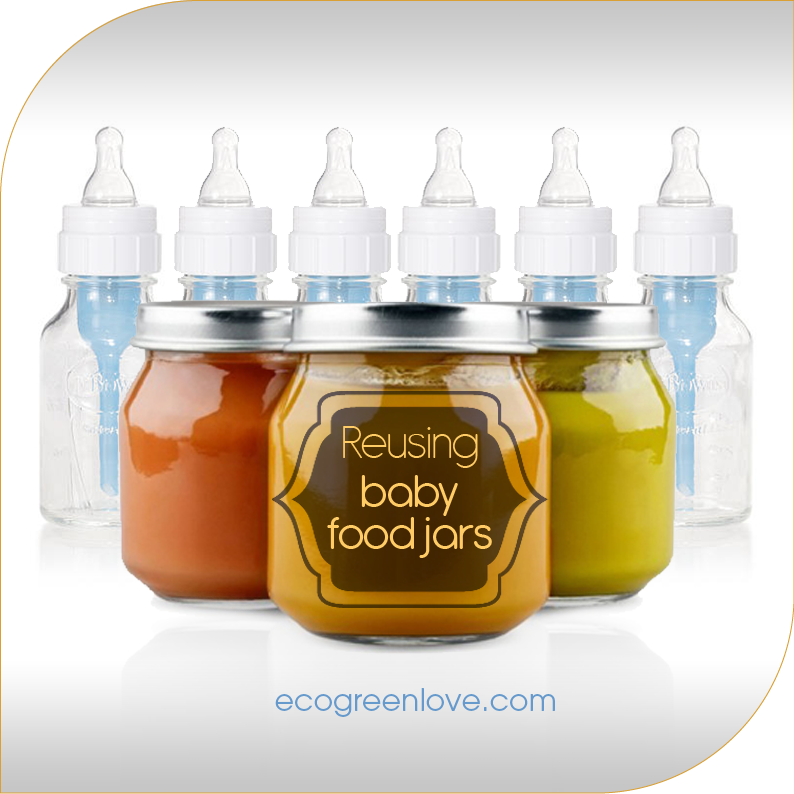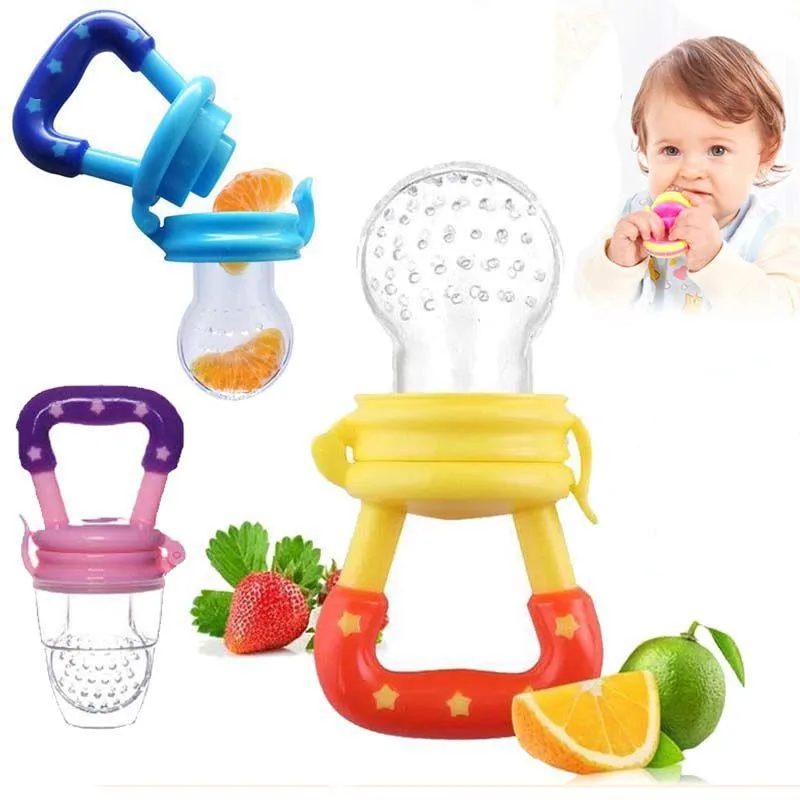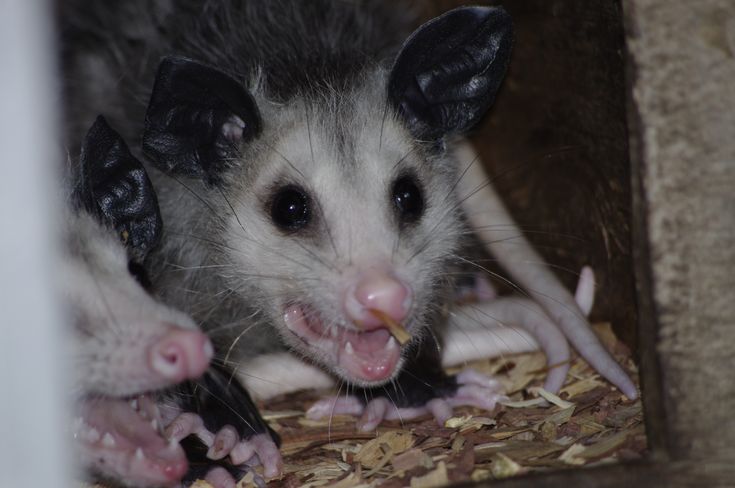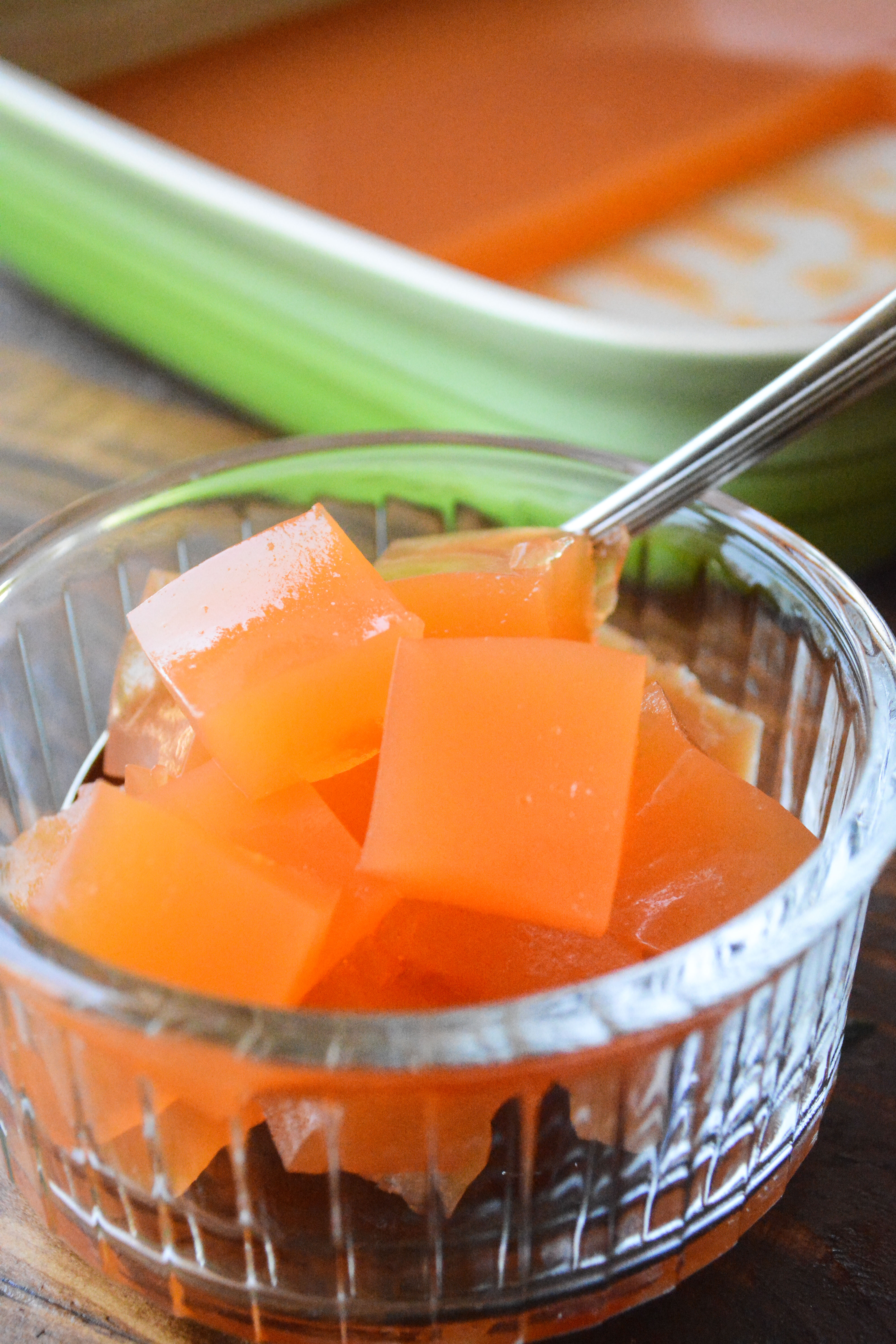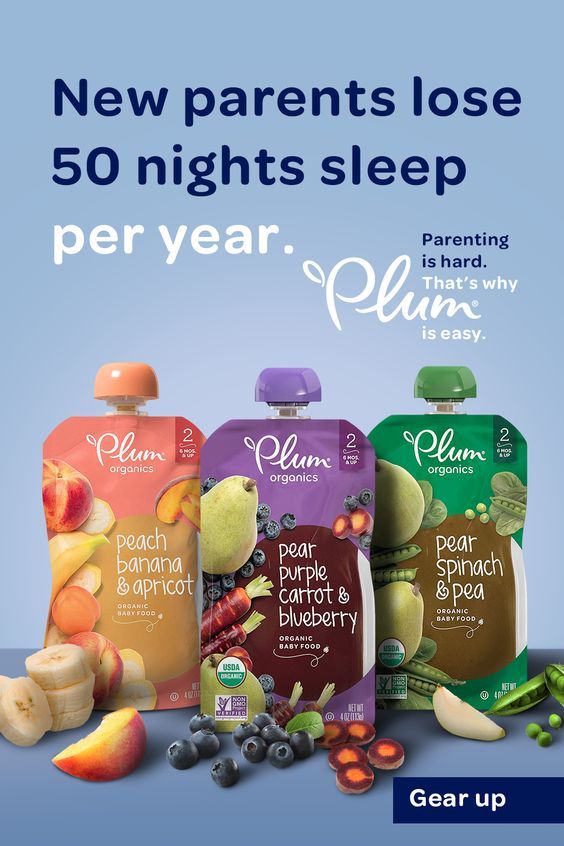Jervis and george baby food jars
Jervis & George – Glass Baby Food Storage Containers (6 Pack) Small Reusable 4oz Jars with Airtight Lids | Buy online
RRP $36.00
NOW
$18.00-
Save 50% off RRP
Description
- Convenient: Portion, store, freeze, heat and serve your homemade baby food with ease in these high quality 120ml glass jars.
- Mark: Each jar has easy to read measurement markings and each set contains a non-toxic wet erase marker pen allowing you to write the contents of each jar on the lid.
- No Mess Lids: The colourful lids come with a silicone seal to ensure they are airtight, watertight and leakproof to prevent spills and keep food fresh for longer. The lids have also been specially contoured meaning they are easy to screw open and closed, even for small hands.
- Safe: 100% BPA, phthalate and PVC free. Also freezer safe, dishwasher safe (top rack) and microwave safe.
- ECO Friendly: Made from glass which does not absorb germs or odours and makes food taste fresher and fuller as well as ensuring little waste goes back into our environment.
- Jervis & George jars are made from high quality glass and perfect for storing your homemade baby food, finger foods, snacks, yogurt, breast milk, powdered formula and much more.
Looking for size guides? View size guide here
Returns & Refund Policy
husshshop offers you the best possible sale prices.
As all items are sale items, we do not offer refunds, returns or exchanges. Before ordering please note that all purchases are final.
RRP $36.00
NOW
$18.00-
Save 50% off RRP
In stock
Quantity
Jervis & George - Glass Baby Food Storage Containers (6 Pack) Small Reusable 4oz Jars with Airtight Lids quantity
Description
- Convenient: Portion, store, freeze, heat and serve your homemade baby food with ease in these high quality 120ml glass jars.

- Mark: Each jar has easy to read measurement markings and each set contains a non-toxic wet erase marker pen allowing you to write the contents of each jar on the lid.
- No Mess Lids: The colourful lids come with a silicone seal to ensure they are airtight, watertight and leakproof to prevent spills and keep food fresh for longer. The lids have also been specially contoured meaning they are easy to screw open and closed, even for small hands.
- Safe: 100% BPA, phthalate and PVC free. Also freezer safe, dishwasher safe (top rack) and microwave safe.
- ECO Friendly: Made from glass which does not absorb germs or odours and makes food taste fresher and fuller as well as ensuring little waste goes back into our environment.
- Jervis & George jars are made from high quality glass and perfect for storing your homemade baby food, finger foods, snacks, yogurt, breast milk, powdered formula and much more.
Looking for size guides? View size guide here
Returns & Refund Policy
husshshop offers you the best possible sale prices.
As all items are sale items, we do not offer refunds, returns or exchanges. Before ordering please note that all purchases are final.
7 Best Baby Food Storage Containers (2023 Reviews)
Whether you’re making your own baby food or storing store-bought baby food, you want containers that will keep it fresh and safe from harmful chemicals, prevent freezer burn, and be easy to use and clean.
As baby food storage containers come in all shapes, sizes, prices, and formats, it can be challenging to know which containers are worth buying. But we’ll make it easy for you. We’ll explain the advantages of the different types of food storage containers and how to use them to store your baby food safely.
We’ll even compare the top products and give you our reviews of the best baby food storage containers for storing and freezing homemade baby food purees for use at home or on the go.
Our Top Picks
We love honesty! Mom Loves Best earns a commission through the following hand-picked links at no extra cost to you.
Image
Model
Product Comparison Table
Features
Best Glass Storage
WeeSprout Glass
- Measurements on the container
- Set of 12
- High-grade, food-safe glass
Check Price
Best Budget Pick
Sage Baby
- Lots of jars for a good price
- BPA-, phthalate-, and lead-free
- Reusable
Check Price
Best Freezer Tray
Kiddo Feedo
- Includes baby food e-cookbook
- Silicone is durable
- Tight clip-on lid
Check Price
Best Plastic Containers
Tovla BPA Free Plastic
- Travel size
- Attached, leak-proof lid
- BPA-free plastic
Check Price
Best SnapLock Containers
OXO Tot Baby Blocks
- Includes carrying tray
- Extra-secure lids
- High-quality materials
Check Price
Best Food Pouches
Wee Sprout Reusables
- Extra wide, double-zipper bottom
- Eco-friendly materials
- Multiple sizes available
Check Price
Best Large Containers
Collapsible Silicone
- 3 large sizes to choose from
- Collapsible design
- Airtight lids
Check Price
Table of Contents
- Our Top Picks
- The Best Baby Food Storage Containers of 2023
- Types of Baby Food Storage Containers
- How to Store Baby Food Safely
- Storing Homemade vs.
 Store-Bought Food
Store-Bought Food - Making Your Own Baby Food
- The Bottom Line
The Best Baby Food Storage Containers of 2023
These are our favorite baby food storage containers.
1. WeeSprout Glass Baby Food Storage Containers
Best Glass Baby Food Storage
View on Amazon
View on Walmart
If you are making baby food for the first time, this glass container set will be a great purchase. We like that it takes the guesswork out of storing baby food and has everything a beginner needs. Glass is also one of the safest materials to work with because it is so easy to clean and sterilize.
Choose from a set of 12 4-ounce or eight 8-ounce microwaveable, dishwasher-safe jars. Each jar includes measurement markings on the side so you can portion your baby’s meals and track how much they eat.
All of the products are 100% BPA-, phthalate-, and PVC-free, so you don’t have to worry about your little one being exposed to questionable chemicals.
These glass baby food storage containers work best for small-batch baby food prep. If you prefer to make large batches of homemade baby food, you may want to purchase several sets.
Pros
- Set includes 12 4-ounce or eight 8-ounce containers.
- Measurement markings on the container.
- Microwave and dishwasher safe.
Cons
- Jars may crack if introduced to sudden temperatures changes.
2. Sage Glass Baby Food Storage Containers
Best Baby Food Storage Jars
Check Price
Baby food has traditionally been stored in tiny glass jars because jars are portable and strong, and they hold a tight seal.
We searched for the best large-quantity, high-quality set of baby food storage jars to use at home and found this great set from Sage.
The 12 reusable 4-ounce jars are made of glass, are safe to use in the microwave and freezer, and come with tight-sealing lids and a marker.
With 12 jars for one great price, this is an excellent option for moms on a budget who want to make baby food in bulk.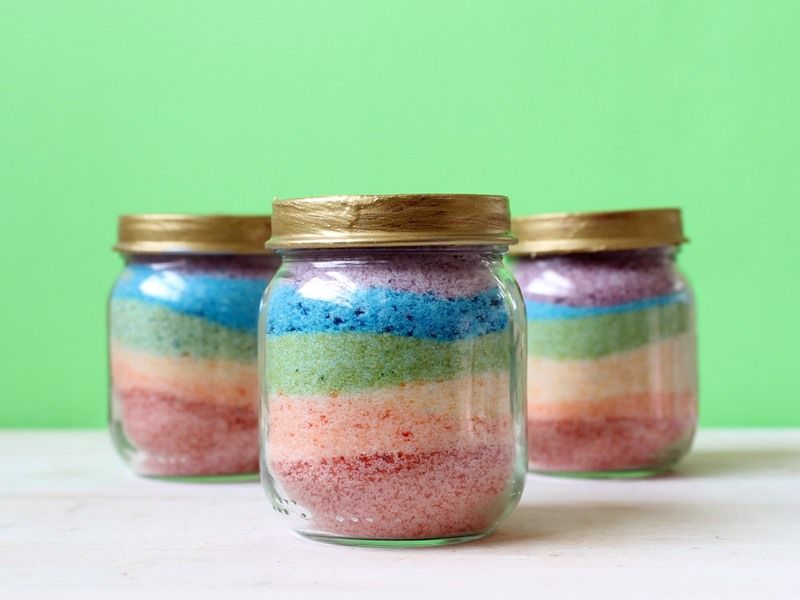
Pros
- Lots of jars for a good price.
- High-quality glass material.
- Reusable.
- BPA-, phthalate-, lead-, and PVC-free.
Cons
- Takes up storage space.
- Prone to breakage.
3. Kiddo Feedo Freezer Tray
Best Freezer Tray for Baby Food
Check Price
Silicone is the king of the freezer! Foods won’t get stuck in silicone molds and will pop out easily. Silicone is washable, stain-resistant, and won’t scratch or scuff over time.
Freezing larger batches of baby food is a popular way to cut down on time in the kitchen for busy moms. This silicone freezer tray makes it easy to make baby food in bulk, then store it in the freezer to use as needed.
Each tray comes with nine food pods that can hold up to 2.5 ounces of food. Each pod has individual measurement markings and a unique clip-on lid that prevents spills, protects against freezer burn, and makes stacking easy.
Purchase several trays in different colors and freeze different food types in different-colored trays to easily decipher which food you’re grabbing at a glance.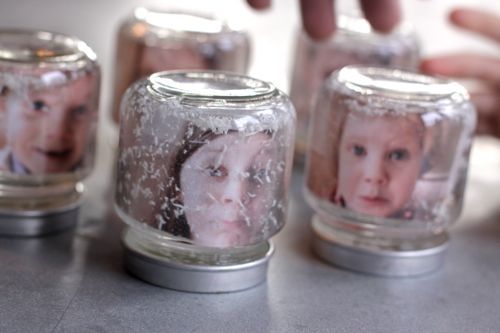 Once your baby food is frozen, you can leave it covered in the trays in the freezer and pop out a serving whenever you need one. Or transfer the frozen food to zip-top bags so you can reuse the tray.
Once your baby food is frozen, you can leave it covered in the trays in the freezer and pop out a serving whenever you need one. Or transfer the frozen food to zip-top bags so you can reuse the tray.
Our favorite thing about this freezer tray is the downloadable 47-page e-cookbook and instruction guide that comes with your purchase. If you are nervous about storing baby food in the freezer, the cookbook can give you some ideas on the best recipes to use.
Pros
- Includes baby food e-cookbook.
- Silicone is durable.
- Tight clip-on lid.
Cons
- Strong silicone scent.
4. Tovla BPA-Free Plastic Baby Food Containers
Best Plastic Baby Food Containers (BPA Free)
Check Price
Plastic containers have a lot of positives. They are generally less expensive than glass containers, easier to purchase in a wide variety of sizes, and fairly indestructible if your child gets a hold of them.
However, many concerns have been raised about the types of plastics used to make baby food storage containers. Low-quality plastics can actually leach harmful toxins and chemicals into your food and your baby’s body (1).
Low-quality plastics can actually leach harmful toxins and chemicals into your food and your baby’s body (1).
One of the reasons we like this set from Tovla is because their plastic containers are food-grade safe and free of BPA. If you are a health-conscious mom who wants the convenience of plastic without the fear, this set may be just the thing.
This is the best set for on-the-go moms who may sometimes want to dispose of their baby food storage containers while they are out without breaking the bank. But don’t worry, they’re recyclable!
Each of the 50 plastic containers in the set holds approximately 3 ounces of food. The attached lids hinge and snap closed, meaning you will never lose a lid again.
Pros
- Travel size.
- Attached leakproof lids.
- BPA-free plastic.
Cons
- Not microwaveable.
- The thin plastic can be squashed easily.
5. OXO Tot Baby Blocks
Best SnapLock Baby Food Containers
View on Amazon
View on Walmart
View on HomeDepot
View on BuyBuyBaby
View on BedBath&Beyond
Sometimes you need to take your baby food on the go. Whether you are traveling to another state or just down the street, containers with snap lids add more security so your baby food stays right where it is supposed to be.
Whether you are traveling to another state or just down the street, containers with snap lids add more security so your baby food stays right where it is supposed to be.
We are big fans of these special “baby blocks” storage containers, available in multiple sizes in a single set. They have a range of high-quality features, including BPA-free plastic and airtight, watertight, leak-proof snap lids.
They are freezer and microwave safe, making it even more convenient to feed your baby. What we most appreciate is the included carrying tray.
The carrying tray is made of plastic and holds all the containers. This means you can safely transport all the baby food you need without having to stuff jars in a diaper bag or have them floating about your car. It also keeps them in place if you’re freezing baby food and don’t want the trays tipping before the food is frozen.
Pros
- Includes carrying tray.
- Extra-secure lids.
- High-quality materials.
Cons
- Hard to stack without the tray.

6. Wee Sprout Reusable Food Pouch
Best Food Pouches
Check Price
Does the idea of using food pouches for homemade baby food intimidate you? Many mamas feel that way, thinking a food pouch is something only hip food companies use. However, we think they are an excellent tool for helping children feed themselves and gain some independence.
This double-zippered pouch was designed to make the process easy. The best part is the extra-wide zipper opening on the bottom. Simply unzip the bottom, pour the food in, and seal it.
Because the space to fill it is so large, you don’t have to worry about making a mess when filling it up. One of the biggest concerns we have with food pouches is having food get stuck inside them, but the unique zip-open feature allows water to run right through it, so clean up is a snap.
Pros
- Extra-wide, double-zippered bottom.
- Eco-friendly materials.
- Multiple sizes available.
Cons
- Zippers can be hard to seal.
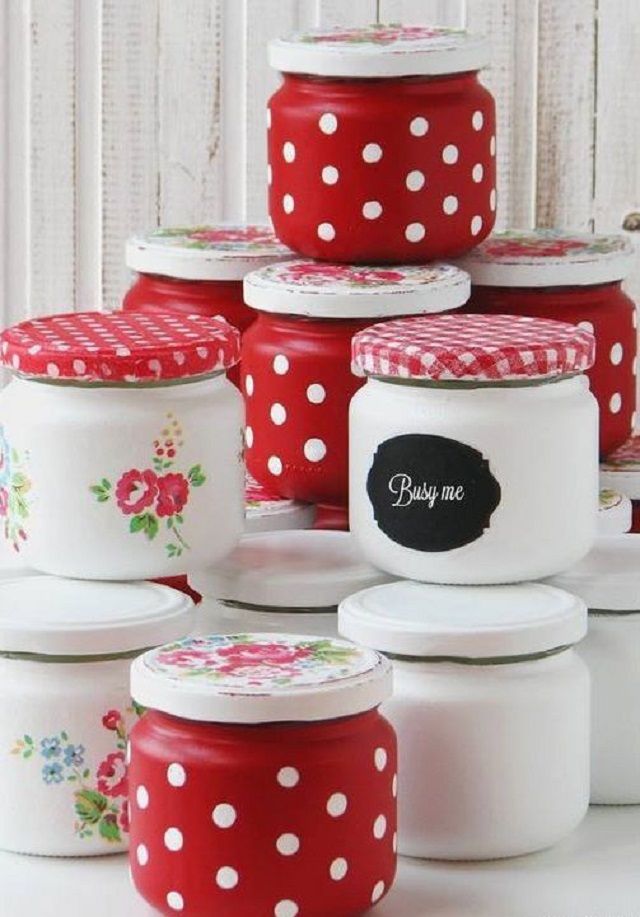
7. Collapsible Silicone Food Storage Containers
Best Large Baby Food Containers
Check Price
If you are a mama who makes baby food in bulk, a large container will save you time. Instead of carefully portioning everything you’ve made into multiple tiny jars, you can put it all in one large container and portion the food out.
These collapsible silicone containers from Wamery are best for baby food storage because they work for many situations. The largest container expands to hold up to 40.5 ounces, but you can convert them to whatever size you need.
The amount of food you need to make may vary depending on your baby’s appetite, health, and growth rate. Use these containers to hold whatever amount of baby food you choose to make, and then store them away easily when you’re done with them.
Pros
- Three large sizes to choose from.
- Collapsible design.
- Airtight lids.
- Made of easy-to-clean silicone.

Cons
- Not designed specifically for baby food.
- No space to mark expiration dates.
Types of Baby Food Storage Containers
There are many types of baby food storage containers available, each designed to help moms. Here is an overview of the types of containers available and some of their benefits.
Glass Baby Food Containers
Glass is a popular choice for baby food jars for a reason. Glass is easy to sterilize, and you don’t have to worry about chemicals leaching into your baby’s food.
Baby Food Storage Jars
While baby food containers come in many shapes and sizes, jars are perfect for those looking to store small amounts of food they can easily carry with them.
Freezer Trays for Baby Food
Do you love making homemade baby food? Then you’ll appreciate the convenience of freezer trays. Freezer trays allow you to make and store homemade baby food for a long time without any hassle.
Plastic Containers
Plastic containers are more affordable for moms on a budget. However, you will want to look for plastic containers that are free of BPA and other harmful chemicals.
SnapLock Containers
SnapLock containers are designed for heavy-duty storage and longevity. Food stays fresh thanks to the airtight and waterproof seal.
Food Pouches
Food pouches are fun for both children and adults. Just squeeze and go! Most food pouches don’t require refrigeration, and children can use them to feed themselves.
Large Baby Food Containers
Sometimes you need to make a lot of baby food at once. Large storage containers can help you keep it all contained without spoiling it.
How to Store Baby Food Safely
You don’t have to be a food science expert to figure out how to store baby food safely.
Just follow these six tips (2):
- Never dip a spoon directly into the baby food storage jar: If you dip your baby’s spoon into a jar of baby food, put it into your baby’s mouth, and then place it back in the jar, saliva has now contaminated your baby food.
 If your baby does not finish a jar of food with saliva in it, you should throw it away. The bacteria in the container will continue to grow during storage, causing the food to spoil. Instead, open the jar, pour a little food into a bowl, and feed your baby from that.
If your baby does not finish a jar of food with saliva in it, you should throw it away. The bacteria in the container will continue to grow during storage, causing the food to spoil. Instead, open the jar, pour a little food into a bowl, and feed your baby from that. - Never leave food out for more than two hours: Once a jar of baby food has been opened, you can safely leave it out on the counter for up to two hours at room temperature. After that, bacteria can grow, especially if it is hot and humid. To be safe, we suggest never leaving opened baby food jars out on the counter. Always refrigerate them!
- Opened baby food jars last up to 3 days in the fridge: Make sure you keep the lids on tight and no saliva has gotten into the baby food. Even if it hasn’t been three days and the baby food looks or smells questionable, throw it out.
- Freeze baby food for up to eight months: The amount of time you can store baby food in your freezer depends on what type of food it is.
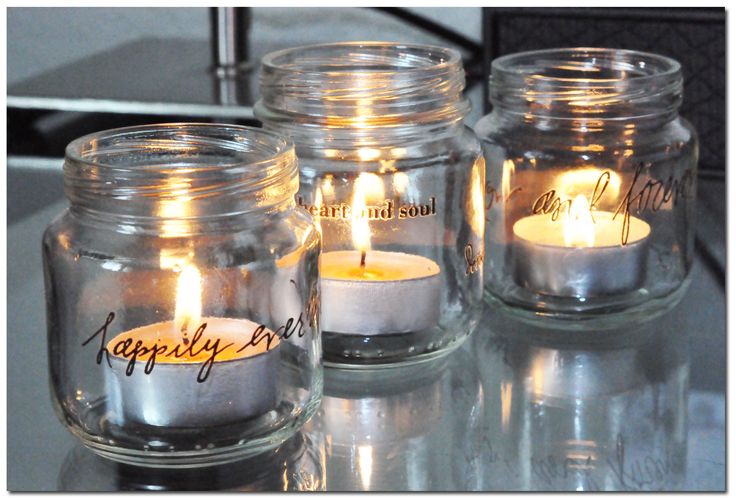 Anything with meat or eggs in it can be frozen for up to two months, while fruits and vegetables can last up to eight months. Homemade baby food you’ve pureed yourself generally lasts between two and four months in the freezer.
Anything with meat or eggs in it can be frozen for up to two months, while fruits and vegetables can last up to eight months. Homemade baby food you’ve pureed yourself generally lasts between two and four months in the freezer. - Wash your storage containers thoroughly: No matter what type of storage container you use, wash it carefully with hot soap and water. Food that is stuck inside can spoil and mold.
- Write dates on the jars: Keep track of when you have bought, made, or opened a baby food jar by writing the date on the jar. Many jars come with a spot for a date and time, or you can purchase labels and stickers.
Storing Homemade vs. Store-Bought Food
Do you like to make your own baby food at home? Many moms do. It can be a more affordable, healthy option than factory-made baby food.
However, there are a couple of differences between storing baby food you make at home and baby food you buy in the store.
Most importantly, you need to keep everything clean (3). This includes your storage containers, all utensils, and your countertop space. It is also essential you wash your hands before and after the food-making process.
This includes your storage containers, all utensils, and your countertop space. It is also essential you wash your hands before and after the food-making process.
The shelf life of homemade baby food is also generally shorter than that of unopened store-bought baby food. This is because homemade food uses fresh ingredients and contains no preservatives. As a general rule, you should store homemade baby food for as long as you would an opened jar of store-bought baby food.
Making Your Own Baby Food
There are a lot of benefits to making your own baby food. You can control the ingredients and the portion sizes and save some money.
However, a new mom making baby food for the first time can be easily overwhelmed by the process. Did you use the right ingredients? How long will it last? Will your baby hate it and end up throwing most of it on the floor?
We don’t have all the answers, but we think every mom should give it a try! The journey will be one of exploration and experimentation. But it can become a fun experience and a deeper way to feel connected to your child as you move on to the next stage of feeding and begin introducing different foods into their diet.
But it can become a fun experience and a deeper way to feel connected to your child as you move on to the next stage of feeding and begin introducing different foods into their diet.
The Bottom Line
The WeeSprout Glass Baby Food Storage is our pick as the best baby food storage container as they come with everything a mom needs for making and storing her own baby food. Life is hectic enough, and WeeSprout’s simple system of glass jars with airtight lids helps alleviate stress and keeps you and your little one happy.
If you can store your baby food safely in the best storage containers, a new world opens up for you to explore. Taking care of your child by making homemade baby food can be a delightful experience.
Feedback: Was This Article Helpful?
Thank You For Your Feedback!
Thank You For Your Feedback!
What Did You Like?
What Went Wrong?
is it possible to eat mashed potatoes in jars and lose weight
Studying the range of baby food is amazing: it seems that these babies get the best. Still, modern children can have mango puree for breakfast, eat horse meat with vegetables for lunch, and dine with organic chicken with rice. Why shouldn't adults eat this delicacy too? It turns out that the baby food diet exists and has already gained popularity among Hollywood stars.
Still, modern children can have mango puree for breakfast, eat horse meat with vegetables for lunch, and dine with organic chicken with rice. Why shouldn't adults eat this delicacy too? It turns out that the baby food diet exists and has already gained popularity among Hollywood stars.
Tags:
Lady Gaga
Gwyneth Paltrow
Jennifer Aniston
Diets
How to lose weight in a week
Getty Images
The baby food diet was popularized by Tracy Anderson, an American fitness trainer who has worked with many celebrities. She suggested that those who want to get rid of extra pounds and keep themselves in shape should pay attention to jars of baby puree. Wiz Reeserspoon, Jennifer Aniston, Gwyneth Paltrow and Lady Gaga followed this diet at various times.
There are many advantages of such a diet, but such a diet also has enough disadvantages. We figure out what outweighs and to whom such a diet can suit.
How can you lose weight on baby food?
There are several variations of this diet. The strictest option does not involve the use of any other products - only mashed potatoes, no juices, curds and other products. It is optimal to use only mono-products, which means that, most likely, you will have to limit yourself to mashed potatoes for the smallest ones, because jars for older children already contain mashed potatoes from several components.
It is recommended to consume no more than 1200 calories daily. Considering that one jar contains up to 100 kcal, you will need quite a lot of such jars for one day. It is quite possible to lose weight on baby food - following a diet for babies can provide a loss of up to 5 kilograms per week.
ADVERTISING - CONTINUED BELOW
An easier and simpler option is to substitute baby puree for several meals or use baby food for a quick snack.
IT'S INTERESTING
Gwyneth Paltrow and other stars whose wedding was canceled on the eve of the celebration
Brad Pitt and Gwyneth Paltrow met on the set of the film "Seven", on the set they began a stormy romance. The couple even had the same style of clothing at that time! The upcoming wedding of two sex symbols seemed like the event of the year, but Brad and Gwyneth unexpectedly parted ways. According to rumors, the reason was the bride's infidelity: she allegedly had an affair with colleague John Hannah on the set of "Beware the Doors Are Closing."
1 of 5
What are the benefits of a baby food diet?
Such a diet can bribe with its simplicity - you don't need to count calories, because all the data is written on the jar. There is no need to waste time on cooking, serving and studying the composition, and the products for babies are so diverse that such a diet cannot be called boring. Do not forget about the quality of the products - baby food meets the highest standards, and therefore definitely does not contain harmful additives, artificial colors and incomprehensible ingredients.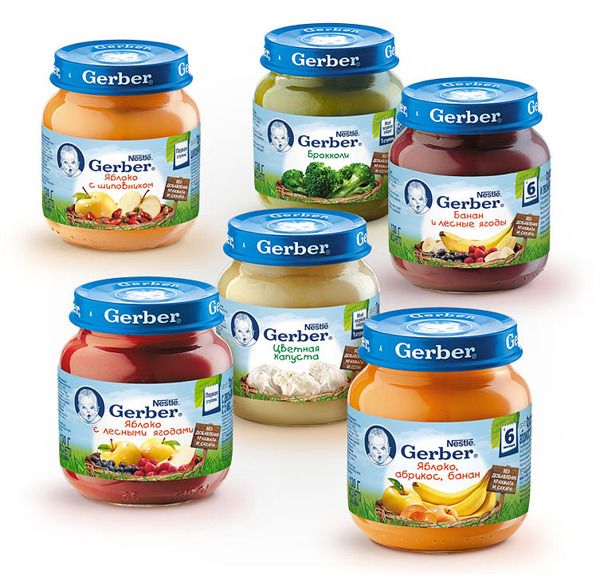
In general, when choosing food for the little ones, you definitely will not buy pizza for babies or baby fries in a jar: the assortment will be healthy and healthy. Take at least mashed broccoli or green peas.
Weight loss on such a diet is more than real: the absence of harmful products, calorie restriction, portions adjusted to the gram will help get rid of extra pounds.
The baby puree diet: diet cons
It is clear that for most of us, baby food as a permanent diet will not work - this system can serve to unload for a week or two. Abuse of a strict version of the diet can harm rather than improve the body.
If you follow such a diet, you will have to eat food without spices - salt, pepper and other seasonings are not added to monocomponent purees. Surviving more than two weeks on unleavened food is not so easy.
In addition, it is worth remembering that protein, whole grains, fiber and proper fats enriched with polyunsaturated fatty acids are not enough in children's products - they are quite enough to provide everything a baby needs, but they are not enough for an adult.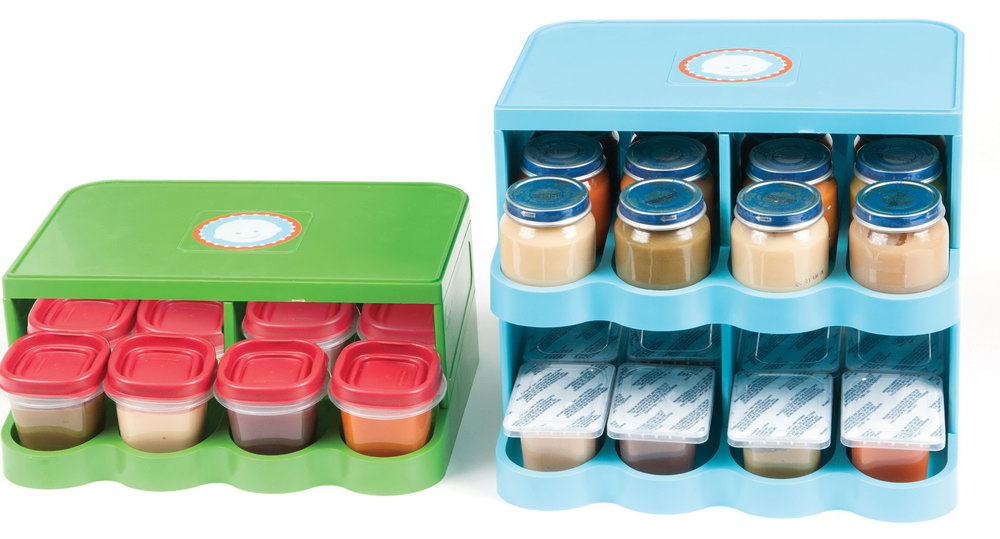 Long-term adherence to such a diet can lead to digestive problems.
Long-term adherence to such a diet can lead to digestive problems.
For those who have already experienced certain diseases of the digestive system, the use of baby puree in large quantities should be completely abandoned. Also, the diet is not recommended for pregnant and lactating women, those who suffer from anemia, have problems with pressure.
Another important factor is the high cost. A two-week sitting on baby puree will cost a pretty penny, because you will have to eat the contents of 10-15 cans every day, which will cause both the body and the wallet to lose weight at the same time. We also note the environmental aspect - such a huge number of empty jars will quickly accumulate in your house that the question of their proper disposal may arise.
Baby puree: yes or no
Feedback from those who have already tried the baby puree diet is mixed. Some say that such a diet really allowed them to throw off those extra pounds, while others note a constant feeling of hunger for one or two weeks of “canned” nutrition.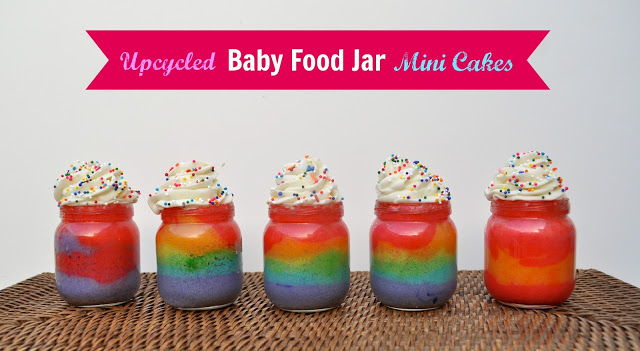 Many simply yearned for "adult" food, wanting to chew on pieces of food and not only absorb certain foods, but enjoy the very process of eating.
Many simply yearned for "adult" food, wanting to chew on pieces of food and not only absorb certain foods, but enjoy the very process of eating.
Those who nevertheless decide to try such a diet should not forget that it is not necessary to follow it for more than two weeks. It is important to drink enough water, and if necessary, add at least a little fiber to your diet. If any health problems associated with such nutrition occur, the diet should be stopped immediately, and it is best to consult a nutritionist before starting a weight loss course.
Baby food - from a jar or do-it-yourself? Pros and cons
Complementary foods are solid foods for young children in addition to dairy products that they have received for several months as their sole source of nutrition.
— Polina Aleksandrovna, why is the introduction of complementary foods called a transitional stage in a child's nutrition?
— The beginning of acquaintance with complementary foods does not mean the transition to an adult table.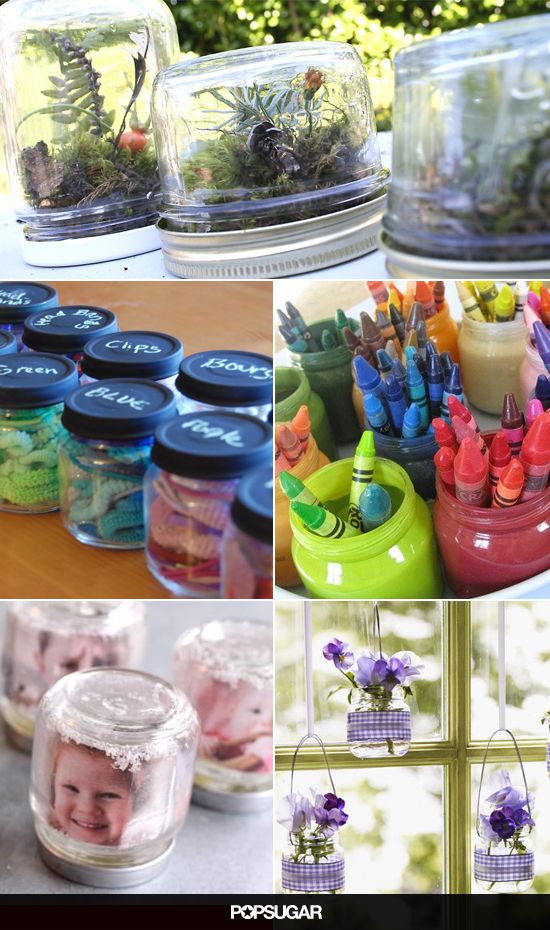 The first or second complementary foods are important so that the child adapts and is psychologically ready to eat adult food, and his digestive organs are tuned to work properly. Therefore, complementary foods are considered a transitional stage from milk nutrition to nutrition at a common table.
The first or second complementary foods are important so that the child adapts and is psychologically ready to eat adult food, and his digestive organs are tuned to work properly. Therefore, complementary foods are considered a transitional stage from milk nutrition to nutrition at a common table.
- Does the composition of the canned zucchini or apple puree for babies differ from the homemade version?
- Factory nutrition may vary depending on the raw materials that the manufacturer uses in a particular puree. Therefore, it is impossible to say that all such food is the same. For example, zucchini puree may contain rice flour so that its consistency is more correct in the opinion of the manufacturer. Mom decides what to put in, and in the same way she can add rice flour. An industrial puree that is suitable for a child and meets the requirements of parents may be identical in composition to homemade puree.
— There is a lot of speculation about baby food in jars. What are the most common parenting misconceptions?
What are the most common parenting misconceptions?
- The most common myth is "canned mashed potatoes don't taste good and kids don't eat them well." In fact, most babies enjoy eating factory-made purees without experiencing any problems.
There are concerns that baby puree is “wrong” or does not meet nutritional requirements. The manufacturer is required by law to list all the ingredients of the product. For example, mashed potatoes may contain rice flour that is not always healthy, especially if vegetables are introduced to the child in order to avoid constipation. What kind of food is more useful for the baby, whether to buy just such a puree or look for another in composition - the parents decide together with the doctor. Therefore, it is wrong to equate all manufacturers and their products.
See also
- "10 myths about canned baby food"
- Puree is often said to contain preservatives.
— Modern technologies make it possible not to use preservatives in the production of baby food. That is why it is written on the jars that open food is not stored for more than a day even in the refrigerator. As long as puree does not come into contact with air, it does not spoil within the specified shelf life due to sterilization and vacuum packaging. After opening the jar and contact with air, the puree quickly deteriorates, which indicates the absence of preservatives in it.
That is why it is written on the jars that open food is not stored for more than a day even in the refrigerator. As long as puree does not come into contact with air, it does not spoil within the specified shelf life due to sterilization and vacuum packaging. After opening the jar and contact with air, the puree quickly deteriorates, which indicates the absence of preservatives in it.
— Is it true that canned baby food is addictive, and then the child refuses natural products?
- There is no causal relationship here. When a child refuses a fresh apple, the problem is not the canned puree in his diet, but that he is not familiar with food in pieces. The child ate a homogeneous puree for a long time, and then they offer him a large piece of an apple - naturally, he will not cope with it right away. That is why, after the child gets used to a homogeneous puree, puree with soft small pieces is gradually introduced - so that there is no discomfort if the baby does not chew them. Gradually, the pieces become larger and denser. Over time, the child comes to eat a real whole apple or other hard fruit or vegetable.
Gradually, the pieces become larger and denser. Over time, the child comes to eat a real whole apple or other hard fruit or vegetable.
Baby food in a jar or homemade puree - which is right for a baby? Pros and cons of
— How long can I feed my baby bottled baby food?
- You can feed your baby as much as you like, there is no strict age limit. But baby needs to be introduced to the different textures and flavors of . The need for canned food usually disappears when the baby moves to a common table with a diet familiar to the whole family. During this period, puree from a jar, especially tasty and sweet fruit varieties, often becomes a safe treat for grown-up babies.
— In which cases canned baby puree is contraindicated?
- There are no diseases in which canned puree is contraindicated. But for some diseases, the presence of a particular product in baby food is undesirable. Factory puree is different in composition.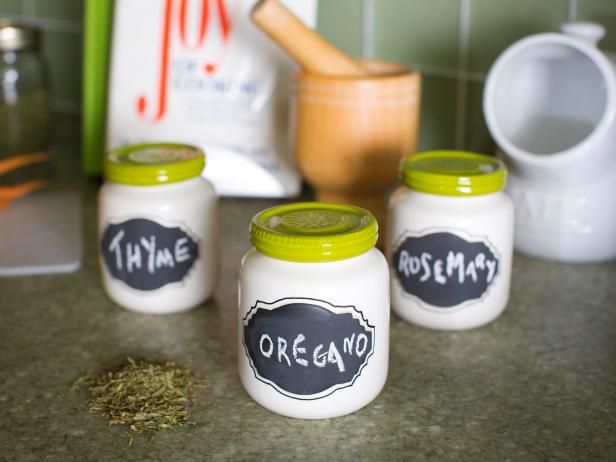 Parents can choose purees without ingredients that are not suitable for the baby or should be limited in his diet, and continue to feed the canned product without problems.
Parents can choose purees without ingredients that are not suitable for the baby or should be limited in his diet, and continue to feed the canned product without problems.
— How to choose baby food in a jar that is healthy for a child?
- First of all, you need to read the full composition of the product on the back, because some ingredients are not indicated on the front label of the jar. It is important to pay attention to the expiration date of the food, the reputation of the manufacturer. All components of the puree must correspond to the age and condition of the child, his individual characteristics.
For example:
- the first puree must not contain rice flour;
- Strawberry puree should not be given to a four-month-old child;
- cereals are excluded from the diet of children with celiac disease (gluten intolerance);
- An older baby should be offered puree with chunks.
MAMAKO
® fruit puree with goat curd pleases the baby with a delicate taste, and the mother with a simple and understandable composition! The plant, which produces MAMAKO ® fruit puree with goat curd, has successfully passed an international audit and received a TUV certificate, which confirms the quality and safety of products.
What mistakes do parents make when preparing mashed potatoes for feeding with their own hands
- Sometimes parents cook the wrong way - sometimes they overcook vegetables, and also make the puree too thin or thick. I hope that no one will fry food for their young children instead of boiling or steaming. Sometimes parents put spices and salt in baby puree, which is also not worth doing. The child should initially get acquainted with pure tastes, and extraneous additives are useless.
In addition, mothers need to be guided by foods that are appropriate for the age of the child, do not cause allergies and are not difficult for him, and also be guided by what the family eats. If parents give the baby something that they themselves do not eat, then when switching to an adult table, he may refuse the usual family food, he will have to cook it separately. This will be a big problem.
This will be a big problem.
- The child refuses the food prepared by the mother and does not eat anything. What to do in such a situation?
— The same food or dish can be offered to the child during the week. Food selectivity in children often depends on taste sensations, but a child may refuse to eat for other reasons, for example, when he is not hungry or would like to play instead of dinner. If during the week the child does not perceive the product that the mother offers, perhaps he still does not like it. In this case, the same product can be given in the form of canned food . Often, kids really refuse homemade puree, preferring the factory version. Again, mom can cook another product and give, for example, broccoli instead of zucchini, which the child will appreciate.
Fruit baby puree MAMAKO ® contains 20% goat curd. This food option is convenient at the stage of introducing children not only to fruits, but also to dairy products. It is the little ones who eat sweet, tasty foods well during the first feeding period and even when they get older - for dessert.
It is the little ones who eat sweet, tasty foods well during the first feeding period and even when they get older - for dessert.
— Are the recipes for complementary foods from 6 months and the recipes for complementary foods at 10 months different?
- For toddlers, there are no recipes and complex dishes, because it is a simple food for discovering pure tastes without salt and spices, gradually getting used to the texture of the products. In the preparation of the first children's dishes, you can vary the combination of vegetables, focusing on the taste of the baby.
Recipes appear from the age of two or three with a full transition to the common table, when family preferences become more important. Of course, the baby needs to be introduced to products that are not consumed in the family, because there is a kindergarten and a school ahead. However, the basis of his diet should be food from the common home table . In addition, parents should be careful in cooking: do not overcook foods, do not add artificial ingredients, properly cool food so that homemade vegetable or fruit puree for the first feeding is healthy and safe for the baby.
- Is it possible to combine canned and homemade food and in what proportions?
— There are no strict rules: what is convenient for the family is chosen. For example, it is difficult to make meat puree at home, so sometimes parents add industrial meat supplements to homemade vegetable puree.
There is also no clear gradation in the percentage of different food options. In one plate, you can mix what you have prepared yourself with what you bought in the store. But at home it is not always possible to achieve the desired combinations and prepare, for example, a combined product that includes a variety of fruits and cottage cheese.
Choose a way of eating that is comfortable for your family. It is easier for someone to cook for their child on their own, for someone it is easier to buy ready-made mashed potatoes. Pediatricians often recommend mashed vegetables or fruits of industrial production, because when it is used for a child, the risk of undesirable consequences is much less.